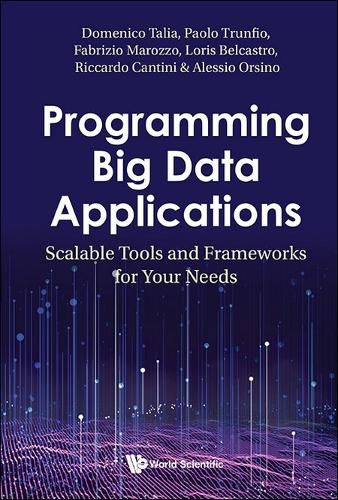Readings Newsletter
Become a Readings Member to make your shopping experience even easier.
Sign in or sign up for free!
You’re not far away from qualifying for FREE standard shipping within Australia
You’ve qualified for FREE standard shipping within Australia
The cart is loading…






This title is printed to order. This book may have been self-published. If so, we cannot guarantee the quality of the content. In the main most books will have gone through the editing process however some may not. We therefore suggest that you be aware of this before ordering this book. If in doubt check either the author or publisher’s details as we are unable to accept any returns unless they are faulty. Please contact us if you have any questions.
In the age of the Internet of Things and social media platforms, huge amounts of digital data are generated by and collected from many sources, including sensors, mobile devices, wearable trackers and security cameras. These data, commonly referred to as big data, are challenging current storage, processing and analysis capabilities. New models, languages, systems and algorithms continue to be developed to effectively collect, store, analyze and learn from big data.Programming Big Data Applications introduces and discusses models, programming frameworks and algorithms to process and analyze large amounts of data. In particular, the book provides an in-depth description of the properties and mechanisms of the main programming paradigms for big data analysis, including MapReduce, workflow, BSP, message passing, and SQL-like. Through programming examples it also describes the most used frameworks for big data analysis like Hadoop, Spark, MPI, Hive and Storm. Each of the different systems is discussed and compared, highlighting their main features, their diffusion (both within their community of developers and among users), and their main advantages and disadvantages in implementing big data analysis applications.
$9.00 standard shipping within Australia
FREE standard shipping within Australia for orders over $100.00
Express & International shipping calculated at checkout
This title is printed to order. This book may have been self-published. If so, we cannot guarantee the quality of the content. In the main most books will have gone through the editing process however some may not. We therefore suggest that you be aware of this before ordering this book. If in doubt check either the author or publisher’s details as we are unable to accept any returns unless they are faulty. Please contact us if you have any questions.
In the age of the Internet of Things and social media platforms, huge amounts of digital data are generated by and collected from many sources, including sensors, mobile devices, wearable trackers and security cameras. These data, commonly referred to as big data, are challenging current storage, processing and analysis capabilities. New models, languages, systems and algorithms continue to be developed to effectively collect, store, analyze and learn from big data.Programming Big Data Applications introduces and discusses models, programming frameworks and algorithms to process and analyze large amounts of data. In particular, the book provides an in-depth description of the properties and mechanisms of the main programming paradigms for big data analysis, including MapReduce, workflow, BSP, message passing, and SQL-like. Through programming examples it also describes the most used frameworks for big data analysis like Hadoop, Spark, MPI, Hive and Storm. Each of the different systems is discussed and compared, highlighting their main features, their diffusion (both within their community of developers and among users), and their main advantages and disadvantages in implementing big data analysis applications.